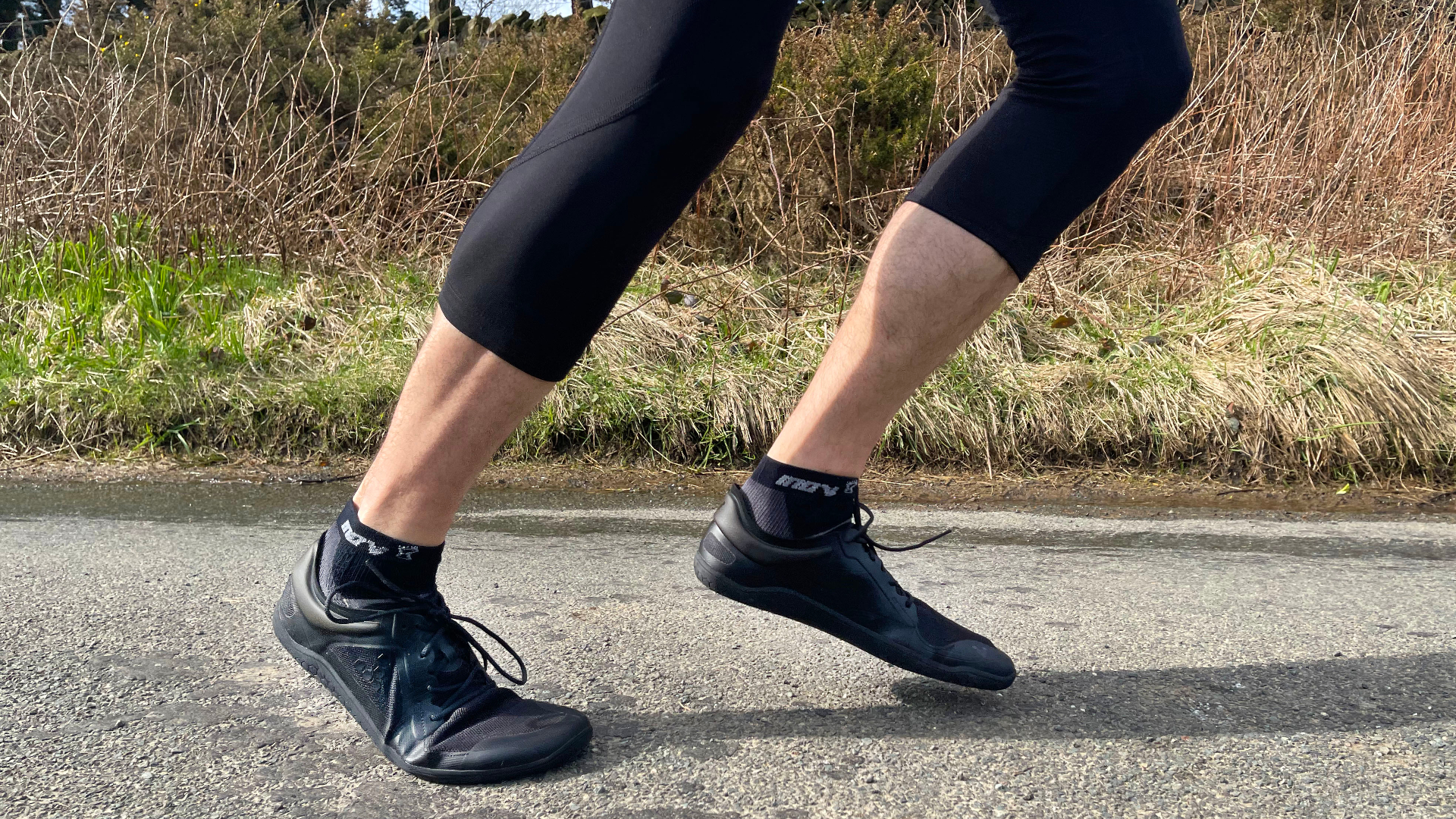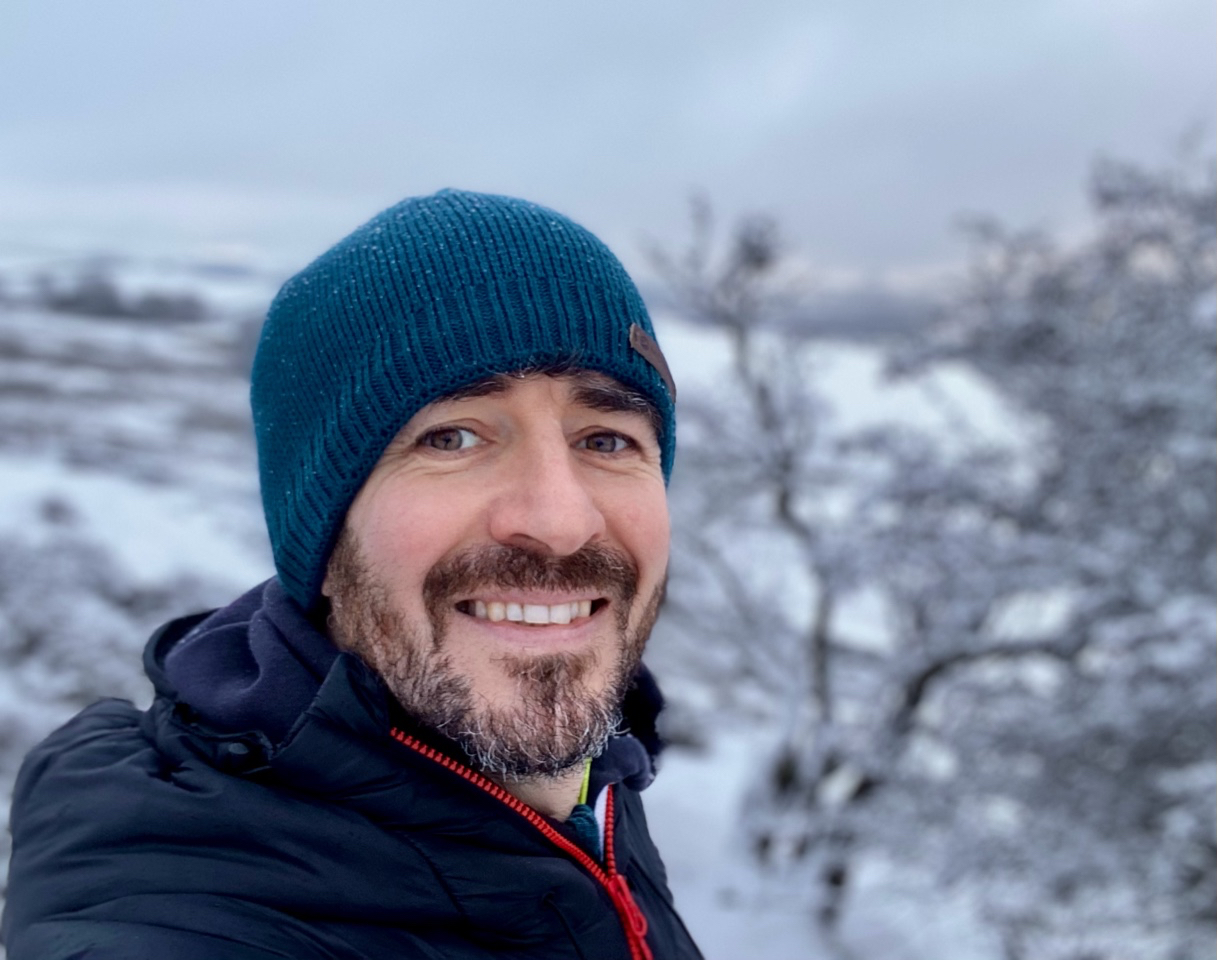How to start barefoot running: all the natural running basics you need to get going
Learn the techniques you need to master minimal shoes as we explain how to start barefoot running

If you're wondering how to start barefoot running, it’s important to understand that to be a barefoot runner, you don’t actually have to run around with nothing on your feet. The term describes a style of running, also known as natural running, where your forefoot hits the ground first on each stride (rather than your heel). Wearing barefoot running shoes (also known as minimal shoes) – with little or no drop between heel and toe, and much reduced or a complete lack of stack and midsole cushioning – encourages this style of running.
Many people believe natural or barefoot running is better both for your body and your performance. But be warned: if you just dispense with your old trail running shoes, put on a pair of minimal shoes and start running around, landing on your forefeet – without some degree of preparation – your calf muscles will soon start screaming at you. Start gently and build up. Go for small runs in your new shoes first. Try various trails, with a different amount of ascent and descent, and see how you feel afterwards. It’s also worth asking yourself some questions before taking the plunge.
Should I even be changing how I run?
Some runners over stride and have an overt heel strike that is enabled by their cushioned shoes. This certainly isn’t ideal. There will be increased impact forces caused by this running form that could cause injury over time elsewhere in the body – knees especially. It’s not really the fault of the cushioned shoe, but put that same runner in minimal shoes and watch how their stride shortens, they’ll land with a more mid to forefoot strike and their foot will impact the ground more gently and more under their mass rather than reaching out in front. You really can’t heel strike in minimal shoes. It’s hard not to conclude that some runners should shorten their stride and increase their cadence.
Do I really need new shoes to change how I run?
Not necessarily – although shoes with a high drop (differential) and lots of cushioning actively encourage heel striking as the midsole under the heel actually gets in the way. But many runners have a forefoot running technique and are happy with their ‘cush’. Of course they’re still missing out on the connected sensation of ‘ground feel’ – when you sense the texture of the trail beneath your feet – which is, we think, pretty addictive. Barefoot or minimal shoes will give you ground feel and really help encourage a natural running style.

Will minimal shoes fix my hurty bits?
If you get frequent trail running injuries that seem related to your style and you have an interest in the whole ‘natural running’ subject; sure, give it a crack. If you get injured often, but are happy with the cushioned shoes you have, then great – it’s entirely your choice. We recommend anyone with persistent injuries visit a podiatrist or sports therapist first. They will analyse your running form and make recommendations that may include different shoes whether more (or less) minimal, supportive, accommodating and so on. If you don’t get injured much and you run in chunky cushioned shoes, the safe recommendation is to stick with what you’re doing.
I’m scared of minimal shoes, what about a kind-of minimal design?
Good plan, imaginary reader! There are loads of design features that get wrapped up in the minimal shoe subject. You might just want a more foot-shaped shoe but with some regular cushioning like the Altra Superior 4.5. Shoes like the Merrell Bare Access XTR combine zero drop and low stack with a foot-shaped toe box, but keep enough midsole to feel familiar to barefoot newbies. And then there are shoes like the Hoka One One Evo Jawz and the Inov-8 X-Talon 255 that have a tiny amount of drop, a little stack and mini midsoles, which work like a gateway drug to the barefoot addiction.
I’m all in. Throw away all my cushioned shoes right?
Not so fast there! If you’re eager to feel every stone, connect with mother earth and go full Huaraches sandal… we’ve got tips. Sure, go minimal, but maybe forget the sandals for the moment and look at very minimal shoes like the Vibram FiveFingers V-Trail, Vivo Barefoot Primus Trail and the Xero Shoes Mesa Trail. All of these shoes have absolutely no midsole. Add them to your shoe rotation, maybe wear them for one run a week at first, and only a short run to begin with. Depending on the shoes you run in and the terrain you run on, adapting may take some time. Run on a firm and flatish surface at first (rather then very technical trails), but keep sealed surfaces like roads and concrete to a minimum. Don’t overthink it, and definitely don’t try to run on you forefoot. Just do what comes naturally. Build up frequency and mileage carefully.
All the latest inspiration, tips and guides to help you plan your next Advnture!

Can I run roads barefoot?
You can, if you want to, but your calves will complain more. On unsealed surfaces such as trails and beaches, the terrain has a bit of give in it, which compensates for the lack of cushioning in your barefoot or minimal shoe. A tarmac road or concrete street doesn’t have any flex and your legs will soon tell you all about it. If you do want to try, go easy at first. The Vivo Barefoot Primus Lite III is more road orientated than other barefoot and minimal shoes we have tested.
- Road running vs trail running: everything you need to know
Are there any downsides to barefoot running and minimal shoes?
As long as minimal shoes are introduced carefully, not really. Some runners may discover they pick up less injuries and find running more enjoyable in a kind of primal way, with a greater connection to the trail. However, it’s doubtful you’ll be smashing your PBs. We know the absolute fastest way to run a road marathon involves wearing some chunky and bouncy shoes. We also know the fastest way to run mountain terrain requires a little midsole and usually a rock plate to protect your foot.
Mid-pack fell-plodder Paul has been writing about his outdoor adventures for about ten years. Initiated by a move from Coventry to the Peak District in 2010, Paul quickly evolved from jogger, reluctant gym-goer and occasional camper to full-blown fell-obsessed trail runner and wild camping adventurer. Paul’s 2016 attempt at the Cape Wrath Ultra was only curtailed (on day six!) by an infected big toe; the story of its Vesuvius style release, with supporting photos, is something Paul is too keen to share.

